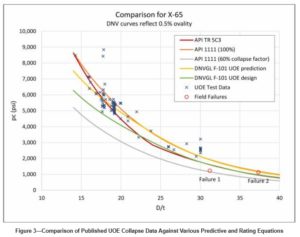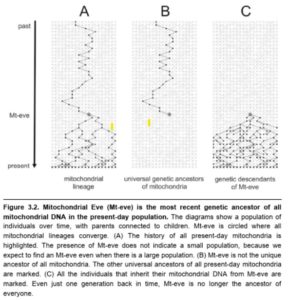Living in Liminality
Over the past 30 years, I have developed a specialty in tubular design. No, I’m not a surfer or valley girl asserting that my designs are cool. ‘Tubular’ is short for tubular goods, the pipes used to contain pressurized fluids in the upstream sector of the oil and gas industry. The industry has tens of thousands of people who use tubular goods, but less than 20 current practitioners who have devoted a career to understand all aspects of design, manufacturing, and use of oil country tubular goods. When your company spends hundreds of millions of dollars each year, you can call pipe whatever you like.
I have a great amount of comfort and pride with my role as an expert. For example, an engineering team was franticly trying to reach me last week to clarify whether they could pressurize their surface casing beyond the performance rating cited in the global industry standard. It turns out, they were asking the guy who wrote that portion of the industry standard. I pulled up my figure used to define the standard and could definitively give them the answer they sought.[1] At that moment, being the expert felt tubular, dude. The moment, as always, was short-lived. How many people truly care about the impact of cold-expansion on collapse of seam-welded pipe?
Nobody is born an expert. Malcolm Gladwell asserts that practice is what you do to become good, and it takes 10,000 hours to master a field.[2] In “Overcoming Barriers to Student Understanding,”[3] Meyer and Land introduce the term threshold concept to describe opening a way of thinking that was previously inaccessible. It takes time and effort to discover and work through these concepts. Their first example presented heat transfer as a threshold concept for cooking. Never did I imagine seeing thermal gradients described in a DLGP required reading![4]
Meyer and Land recognize that the threshold concept can be troublesome, “Knowledge that is ‘alien’, or counter-intuitive or even intellectually absurd.”[5] Furthermore, they describe the transitional period—liminality—when the individual is within the threshold itself. If the transformation is protracted, there can be oscillation and even regression in progress. This is a key for the journey to mastery. In a companion book, Gina Wisker’s chapter quotes M. Kiley’s study of doctoral candidates stuck in their progress, “If only I’d known that I was just in a stuck place it would have made it so much easier.”[6]
Getting Unstuck
I enrolled in the DLGP as a demarcation between my professional career and whatever comes next. I am trading mastery for the unknown. It is learning the first thing about new topics rather than the 132nd nuance of the same old thing. Though the program provides a forum for discovery, my journey is not limited to the curriculum.
For example, I heard a fascinating interview of Joshua Swamidass on the Bible Project several years ago.[7] Professor Swamidass is a computer scientist who works on modelling the human genome. He is also a follower of Christ who is deeply interested in whether the Bible and science are conflicting or complementary. In his book,[8] he provides a hypothesis for how the biblical Adam and Eve can be genealogical parents to mankind without contradicting the genetic diversity research which requires a source much broader than two. That’s a mouthful. I made it to chapter four before getting in that stuck place of liminality. Mitochondrial Eve was driving me back to the comfortable place of ignorance.
And then Adler showed up.[9] I was given permission to skip the part I don’t understand and read the parts I do. I found Swamidass where I left him near the bottom of a basket. I switched from Analytical Reading to Inspectional of another book co-authored by Michaela’s Biblical Studies professor.[10] I cannot fully judge either book because I have not worked through all the arguments. I don’t need to own Swamidass’s Figure 3.2 on an equal footing with my Figure 3. But I’m back in liminality and it is no longer frustrating.
[1] Rich Miller et al. “Collapse Ratings of Cold Expanded Line Pipe Used as Casing.” In SPE Annual Technical Conference and Exhibition, D011S001R003. Calgary, Alberta, Canada: SPE, 2019. https://doi.org/10.2118/195971-MS.
[2] Malcom Gladwell. Outliers: The Story of Success. 1st ed. New York: Little, Brown and Co, 2008.
[3] Jan H.F. Meyer and Ray Land, eds. Overcoming Barriers to Student Understanding: Threshold Concepts and Troublesome Knowledge. London: Routledge, 2006.
[4] Heat transfer is also a threshold concept for understanding how application of internal coatings changes the collapse resistance of cold-expanded line pipe. This knowledge changed my life but not yours, which is why you can skip reading the footnotes.
[5] Meyer and Land, 4.
[6] Ray Land, Jan H. F. Meyer, and Michael T. Flanagan, eds. Threshold Concepts in Practice. Educational Futures, v. 68. Leiden Boston: Brill | Sense, 2016. https://doi.org/10.1007/978-94-6300-512-8.
[7] “The Genealogical Adam and Eve.” Accessed January 20, 2025. https://bibleproject.com/podcast/genealogical-adam-and-eve/.
[8] S. Joshua Swamidass. The Genealogical Adam & Eve: The Surprising Science of Universal Ancestry. Downers Grove, Illinois: IVP Acdemic, 2019.
[9] Mortimer J. Adler and Charles Van Doren. How to Read a Book. Rev. and Updated ed. New York: Simon and Schuster, 1972.
[10] Dennis R. Venema and Scot McKnight. Adam and the Genome: Reading Scripture after Genetic Science. Grand Rapids: Brazos Press, 2017.
8 responses to “Living in Liminality”
Leave a Reply
You must be logged in to post a comment.


Rich, Totally Tubular Post, Dude!
The quote about how if I had known I was in liminality, it would have made it easier also stood out to me. How do you think people can recognize when they are in liminality? There’s one thing to realize after the fact, but how do we recognize it in the moment?
Meyer and Land give the example of midlife crisis as liminal. Let’s go with that illustration, recognizing that I have passed through the portal and you likely have a bit to go. Self-awareness enables me to distinguish between a normal questioning of all things versus a skewed belief that my lot in life would improve by mortgaging the house in exchange for an ugly Tesla Cybertruck. Healthy perspective allows me to see that I’m in the transitional state of life where rash financial decisions aren’t wise. Transparency with others–giving and receiving feedback–provides a way to gain that perspective when my focus is blurry. Admitting my struggles has been a helpful yet often difficult first step.
Rich, I like the idea that perspective in a community and admitting difficulty help with liminality. We can probably strive for that as a cohort—to admit when we are struggling.
I enjoyed your post, Rich. I have pretty much zero understanding of “Mitochondrial Eve”, so it has also given me a lead to a new area for curiosity that I had never explored before.
With you having significant competency in an engineering domain and now, as you say, stepping into some new territory, do you foresee interdisciplinary concepts emerging in your thinking and, if so, how?
Jobs involve both the ‘what’ and the ‘how’. I don’t expect to use my understanding of the non-central Student’s t distribution (yes, I’m consciously using obscure jargon) for anything related to my future context. My experience in coaxing input from the quietest voice in the room is a ‘how’ that directly transfers. Meyer and Land say that threshold concepts are irreversible–we cannot unsee them. I suppose your experience is the same. The context for your learnings will change when you aren’t on the mercy ship, but the value you have gleaned from those learnings will often be transferrable.
With this said, I’m up for a good conversation on thermodynamics if and when Jason calls on it.
Rich, It makes me smile to know that I was enjoying DC with an expert. Thank you for sharing that.
I appreciate your nod to Adler and your articulation of the freedom to skip parts. I enjoyed that same sentiment in Chapter One of Overcoming Barriers, when they acknowledge that their book “will be read in a number of different ways.”
You mention at the end of your post that you are back in liminality; however, this time, it’s not frustrating. It’s an interesting concept to be “in” the threshold with the potential that we are only partially aware of our location. As with the freedom that Alder brings, Meyer seems to bring relief and freedom as well.
Rich, what a delight to read your post. So informative and cool! I am fascinated by your tubular expertise. Oh, to be an expert at something. I tend to know a bit about a lot of things, but no one thing I could say I am an expert in. You are right that expertise takes a lot of time and effort. Maybe I just stay stuck when I reach the thresholds of the broad areas I dabble in. Then regress and jump to another subject. I hope this doctoral experience will get me a bit closer to expertise in one area.
I appreciate your heart to pursue this Doctorate. You are very successful and have expert knowledge in what you are doing now, yet you journey further for more transformative knowledge. I hope to be a lifelong learner and acquirer of knowledge and new practices like you!
Several years ago, I jumped into the genome books and articles with fervor. One of the easy-to-understand books on the origins of Adam and Eve was Who Was Adam? by Fazale Rana and Hugh Ross (Rana and Ross, 2005). After reading this, I thought I understand the DNA journey from one set of parents until I watched some YouTube videos and articles that refuted the premises in the book. Here I entered what Rattray calls the Liminal Tunnel [Rattray, 72] . It gives a visual to liminality as entering a “dark and foreboding place” that one must walk through to be transformed. So, we have come full circle. I have put this here because of its tubular nature. I thought maybe you could use your expertise in one field to understand this new one you have chosen to pursue. Also, I wanted to add to your figures*.
*I intended to have a picture of the Liminal Tunnel, but I cannot figure out how to format anything to get it in this post. I wasn’t even able to do a proper footnote. You can find the figure on page 72 in Threshold Concepts in Practice.
[1] Rana, Fazale and Hugh Ross. Who Was Adam? A Creation Model Approach to the origin of Man. Colorado Springs, Colorado: NavPress Publishing 2005
[2] Rattray, Julie .2016. “Affective Dimensions of Liminality” in Threshold Concepts in Practice, 72. Rotterdam, Netherlands: Sense Publishers
What a thought-provoking comment. Thank you, Jess.
I, too, am disappointed to find the comments as plain-text.